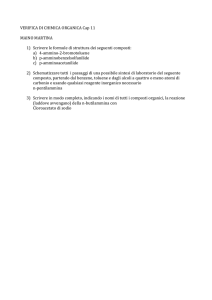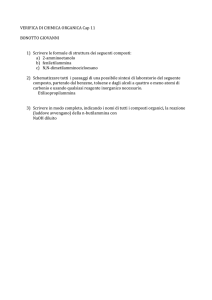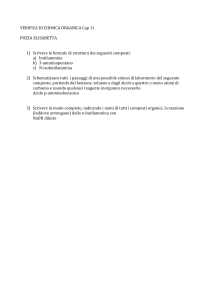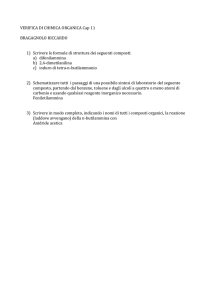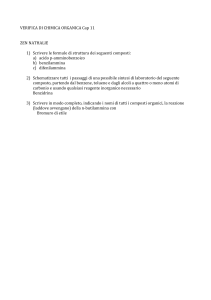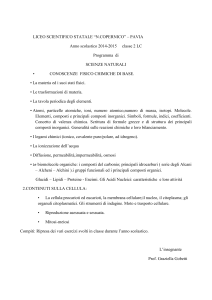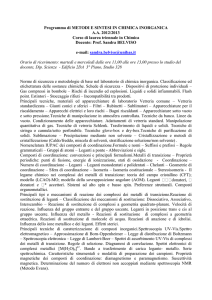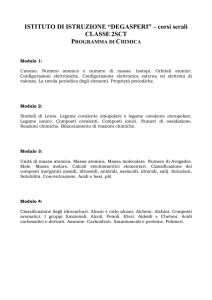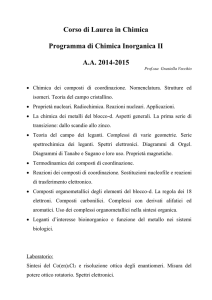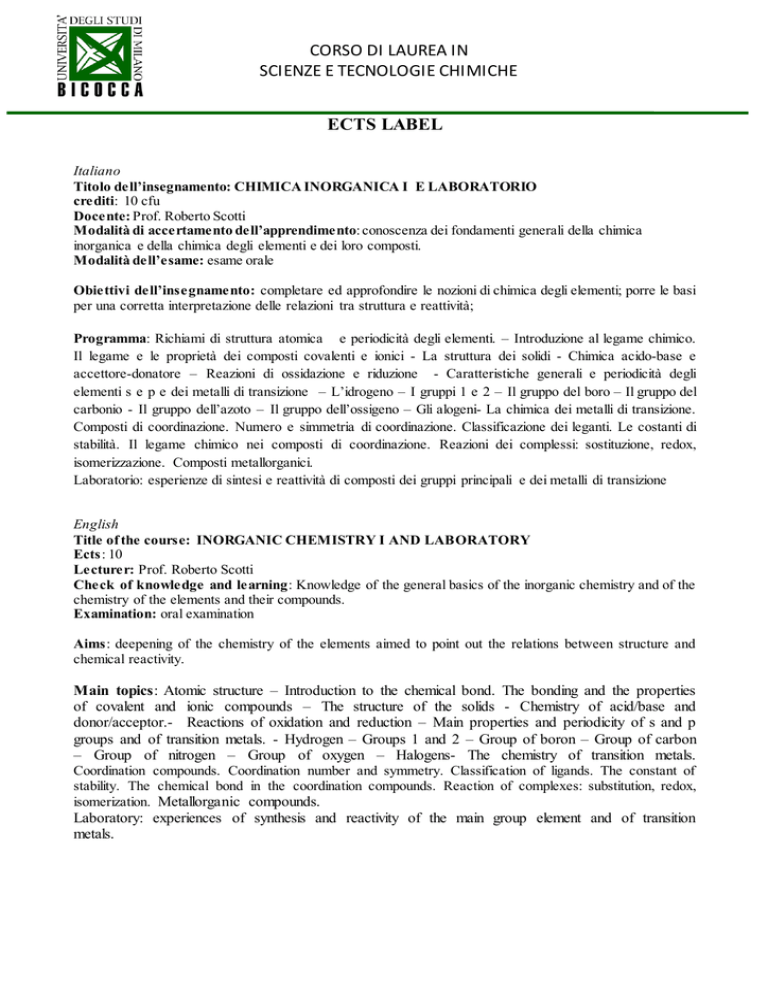
CORSO DI LAUREA IN
SCIENZE E TECNOLOGIE CHIMICHE
ECTS LABEL
Italiano
Titolo dell’insegnamento: CHIMICA INORGANICA I E LABORATORIO
crediti: 10 cfu
Docente: Prof. Roberto Scotti
Modalità di accertamento dell’apprendimento: conoscenza dei fondamenti generali della chimica
inorganica e della chimica degli elementi e dei loro composti.
Modalità dell’esame: esame orale
Obiettivi dell’insegnamento: completare ed approfondire le nozioni di chimica degli elementi; porre le basi
per una corretta interpretazione delle relazioni tra struttura e reattività;
Programma: Richiami di struttura atomica e periodicità degli elementi. – Introduzione al legame chimico.
Il legame e le proprietà dei composti covalenti e ionici - La struttura dei solidi - Chimica acido-base e
accettore-donatore – Reazioni di ossidazione e riduzione - Caratteristiche generali e periodicità degli
elementi s e p e dei metalli di transizione – L’idrogeno – I gruppi 1 e 2 – Il gruppo del boro – Il gruppo del
carbonio - Il gruppo dell’azoto – Il gruppo dell’ossigeno – Gli alogeni- La chimica dei metalli di transizione.
Composti di coordinazione. Numero e simmetria di coordinazione. Classificazione dei leganti. Le costanti di
stabilità. Il legame chimico nei composti di coordinazione. Reazioni dei complessi: sostituzione, redox,
isomerizzazione. Composti metallorganici.
Laboratorio: esperienze di sintesi e reattività di composti dei gruppi principali e dei metalli di transizione
English
Title of the course: INORGANIC CHEMISTRY I AND LABORATORY
Ects: 10
Lecturer: Prof. Roberto Scotti
Check of knowledge and learning: Knowledge of the general basics of the inorganic chemistry and of the
chemistry of the elements and their compounds.
Examination: oral examination
Aims: deepening of the chemistry of the elements aimed to point out the relations between structure and
chemical reactivity.
Main topics: Atomic structure – Introduction to the chemical bond. The bonding and the properties
of covalent and ionic compounds – The structure of the solids - Chemistry of acid/base and
donor/acceptor.- Reactions of oxidation and reduction – Main properties and periodicity of s and p
groups and of transition metals. - Hydrogen – Groups 1 and 2 – Group of boron – Group of carbon
– Group of nitrogen – Group of oxygen – Halogens- The chemistry of transition metals.
Coordination compounds. Coordination number and symmetry. Classification of ligands. The constant of
stability. The chemical bond in the coordination compounds. Reaction of complexes: substitution, redox,
isomerization. Metallorganic compounds.
Laboratory: experiences of synthesis and reactivity of the main group element and of transition
metals.


